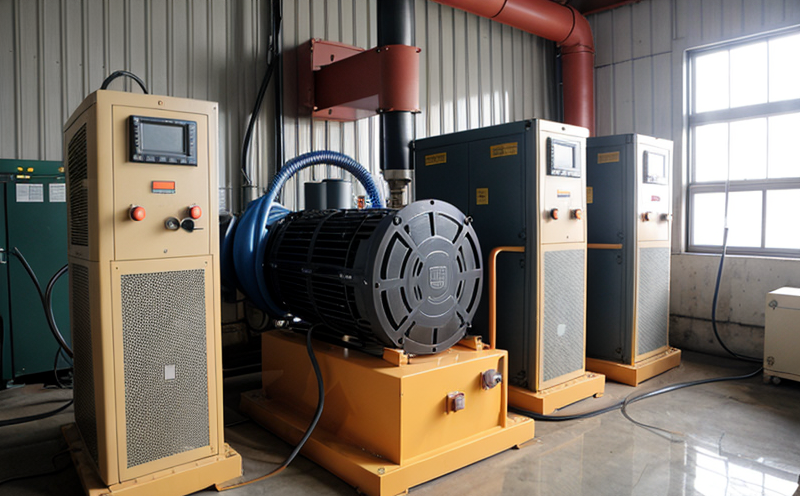ASTM D5185 Elemental Analysis of Turbine Oils
The ASTM D5185 test method provides a detailed elemental analysis of turbine oils to ensure they meet the stringent requirements for power generation equipment. This service is essential for quality assurance and compliance in the power & utilities sector, where the reliability and performance of turbine systems are critical.
In this test, samples are subjected to precise measurement techniques to determine the concentrations of various elements present in the oil. The analysis includes detecting trace amounts of metals such as copper, iron, chromium, nickel, and others that may indicate wear or contamination within the system. This information is crucial for predictive maintenance and ensuring the longevity of expensive equipment.
The testing process involves several key steps: sample collection, preparation, and then subjecting it to atomic absorption spectrophotometry (AAS) or inductively coupled plasma optical emission spectroscopy (ICPOES). These methods allow for highly accurate quantification of elemental content. The results provide insights into the condition of turbine oils and help in making informed decisions about maintenance schedules.
Understanding the elemental composition helps identify potential issues early on, reducing downtime and extending equipment life. For instance, elevated levels of certain elements can signal wear or corrosion, prompting timely intervention before failures occur. This proactive approach is vital for optimizing operational efficiency and ensuring compliance with industry standards like ISO 17806:2019.
- Trace Metals Detection: Identifying minute quantities of metals that indicate wear or contamination.
- Predictive Maintenance: Using elemental data to forecast potential equipment failures and schedule maintenance accordingly.
Why It Matters
The reliability of power generation equipment is paramount in the global energy landscape. Ensuring that turbine oils meet stringent quality standards not only extends the life of these critical components but also enhances overall system performance and reduces operational costs.
Turbine oils play a vital role in lubricating, cooling, and protecting high-pressure systems within power plants. Contamination or degradation can lead to accelerated wear, increased friction, and even catastrophic failures if not addressed promptly. By leveraging ASTM D5185 testing, facilities can maintain optimal operating conditions, minimize unexpected outages, and ensure compliance with regulatory requirements.
The importance of this service extends beyond just the immediate equipment; it contributes to broader sustainability goals by improving efficiency and reducing waste. Regular testing helps operators make data-driven decisions that align with best practices in environmental stewardship.
Quality and Reliability Assurance
- Compliance Verification: Ensuring adherence to industry standards such as ASTM D5185, ISO 17806:2019.
- Prediction of Wear Patterns: Identifying early signs of wear through elemental analysis.
The precision and consistency provided by this testing method are critical for maintaining the integrity of turbine oil used in power generation. Regular testing helps operators stay ahead of potential issues, ensuring that their equipment operates efficiently and reliably over its lifespan.
By adhering to ASTM D5185, facilities can demonstrate their commitment to quality and reliability, which is especially important for organizations seeking certification or recognition from regulatory bodies. This service plays a pivotal role in safeguarding the operational stability of power generation systems.
Environmental and Sustainability Contributions
- Eco-Friendly Operations: By preventing equipment failures, this service helps reduce waste and energy consumption.
- Sustainable Maintenance Practices: Promoting the use of efficient lubricants that contribute to overall sustainability goals.
The environmental impact of power generation is a growing concern. Ensuring that turbine oils meet high standards reduces unnecessary wear, which in turn decreases resource consumption and operational costs. This service supports broader sustainability efforts by promoting sustainable maintenance practices and reducing the carbon footprint associated with energy production.
Through ASTM D5185 testing, facilities can contribute to more efficient operations, thereby supporting global initiatives aimed at reducing environmental impacts. By making informed decisions based on accurate elemental data, operators can implement strategies that enhance both operational efficiency and sustainability.





